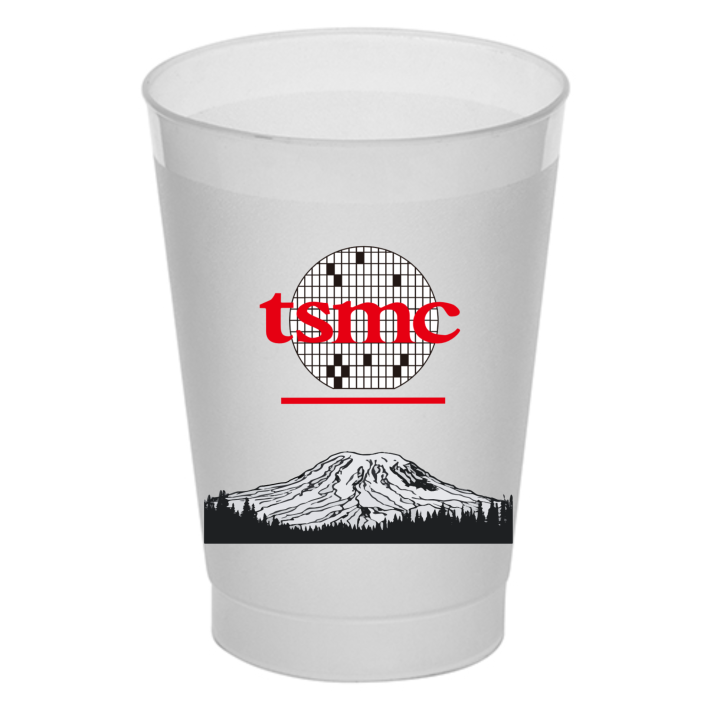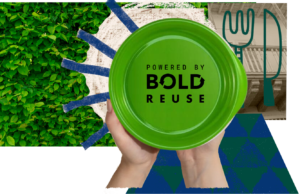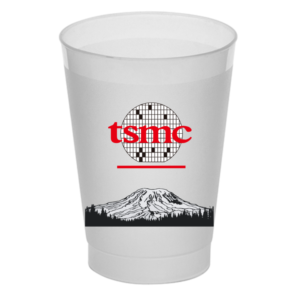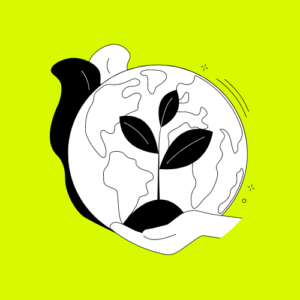TSMC, a global leader in semiconductor manufacturing, is saving 400,000+ single-use cups a year from entering landfills at its Camas, WA campus with reusable cups.
Every year, corporations contribute a staggering amount of single-use waste to landfills, and these disposable items often take hundreds of years to decompose, leaching harmful chemicals into the environment and contributing to pollution.
Switching to reusable items, like cups, significantly reduces the amount of waste sent to landfills. Reusable cups can be sanitized and used hundreds of times, reducing the need for single-use products. This not only decreases the volume of waste output but also conserves resources and energy that would otherwise be used to produce disposable items.

We sat down to chat with a member of the TSMC Washington team about the story behind switching to reusable cups. Here’s what she had to say:
Why did TSMC decide to switch to reusable cups?
There were a few key factors in our decision to switch to reusable cups. Firstly, we wanted to reduce our overall landfill contributions. We used a high quantity of Styrofoam cups for water in our cleanroom and across our site, and we knew we could do better. Secondly, Washington state implemented new regulations banning single-use Styrofoam for food and drink, so we needed to make the switch. We considered other disposable cups that would work in our cleanroom, but we realized we could break into the circular economy eliminating landfill contributions while complying with regulations.
What steps did TSMC take to implement the reusable cup program?
There were three main steps we took to implement the program:
- Getting upper management on board: We justified that, although this would increase operating costs, it would reduce our footprint, meet regulations, and keep water accessible in our cleanroom.
- Preparing employees for the change: This involved advertising on our internal websites, sending out news updates, and putting up posts in high-traffic areas. We also made sure to incorporate employee’s concerns and feedback into the planning process.
- Managing logistics: This included deciding who would stock the cups, determining how many were needed, selecting the right kind of cup dispensers, and establishing the necessary frequency for stocking – all of which Bold Reuse assisted in figuring out. We launched the program and made adjustments as needed, understanding that waiting for perfection would have delayed the launch indefinitely
What challenges did you face during implementation and how did you solve them?
We encountered a few challenges, but thankfully the team at Bold Reuse helped us to navigate each challenge and find solutions.
Proving cleanliness: It was important to demonstrate that our reusable cups program was cleaned to the highest possible industry standards.
Bold Reuse helped us overcome this challenge by creating a video to show our employees how cups are cleaned at the Bold Reuse wash hub and reassuring them that Bold’s operating standards are in line with global food manufacturing standards.
Additionally, we ran an in-house test to test cup shedding to ensure that there was no particle shedding from the cups.
We have been taking feedback/questions and implementing those changes. Some improvements were getting fully enclosed cup dispensers that could also stock more cups at once, getting videos and infographics out about how Bold Reuse works, and assigning specific employees as stockers to limit perceived contamination.
How did you address staff feedback and improve the program?
We took feedback and made several improvements:
- We introduced fully enclosed cup dispensers that could stock more cups at once.
- Bold Reuse provided videos and infographics about how Bold Reuse works.
- We assigned specific employees to manage stocking, limiting who had access to unwrapped cups.
What has been the overall response to the program?
The response has been overwhelmingly positive. Out of a hundred employees, only 5-7 had concerns. The program is functioning well, despite some initial adjustments. Our moral committees had long aimed to eliminate Styrofoam cups, and partnering with Bold Reuse provided a solution that met our cleanroom standards without being disposable. We no longer need to purchase and dispose of 400,000+ cups every year!
What advice do you have for other businesses considering a similar switch?
-
- Assign specific roles for implementation. Ensure clear communication about responsibilities for stocking, pick-ups, drop-offs and overall program management.
- Focus on waste stream improvement: Rather than direct cost comparison, highlight how the switch will improve waste streams. While single-use items may be cheaper, they are not easily recyclable or reusable. Showcasing the quantity of single-use items eliminated helped gain upper management support.
What are TSMC’s plans for reuse?
We plan to expand the program beyond our cleanroom to all our service buildings. We’re also switching to reusable coffee cups in our cafeteria and break rooms instead of disposables. Eventually, we aim to use reusable clamshells and to-go containers in our cafeteria. Additionally, we’re working towards a Zero-Waste to Landfill certification, and making changes to reusable items will be crucial for our success in achieving this certification.
Want to learn more about making the switch to reuse?
Send us a message, we’d love to help you find a solution to your waste problem! Click here to set up a discovery call.




